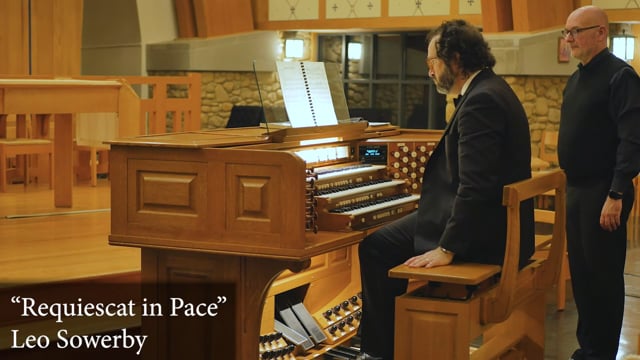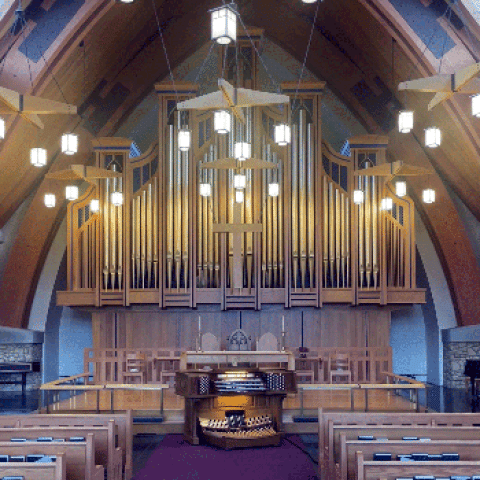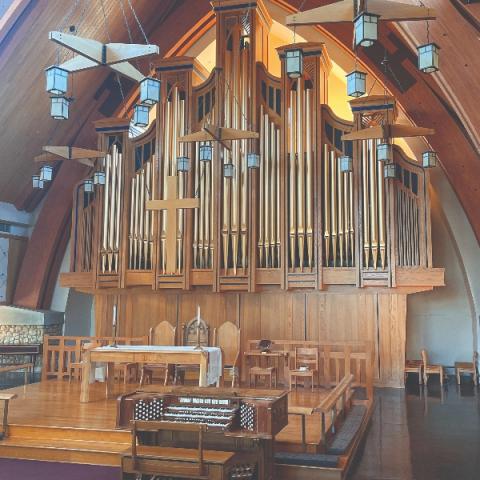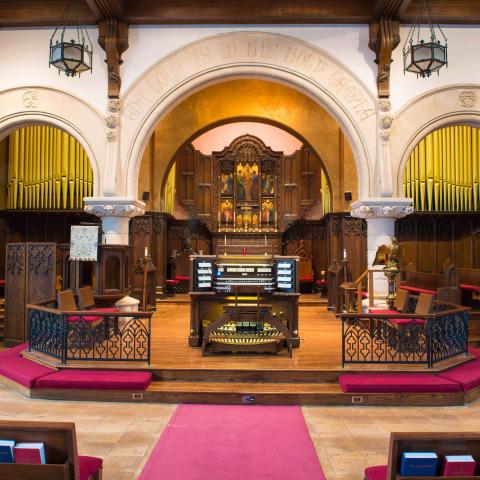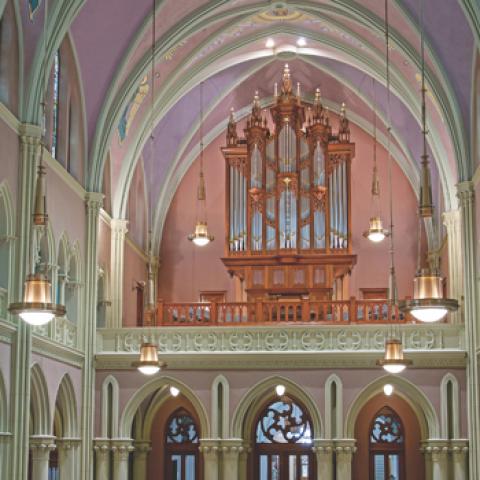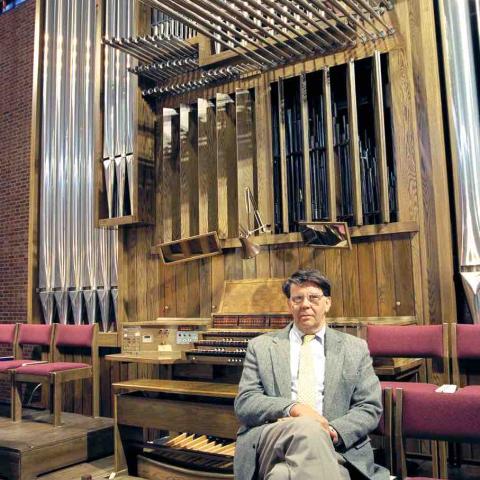Tate Addis plays Fanfare by John Cook on the Patrick J. Murphy & Associates Organbuilders Opus 47R at Saint John’s Episcopal Church, Johnson City, Tennessee.
Recorded live at the dedication concert. Nick Andrews is director of music at the church.
The new organ comprises 46 ranks, 2,709 pipes, across three manuals and pedal. It is featured on the cover of the December 2023 issue of The Diapason:
https://www.thediapason.com/content/cover-feature-patrick-j-murphy-associates-opus-47r
Murphy’s Opus 47 was a complete overhaul of M. P. Möller Opus 7435 (three manuals, 22 stops), built for the First Presbyterian Church of Reading, Pennsylvania, in 1946. In 1965 the instrument was rebuilt by Möller and enlarged to 25 stops. In 2004, Patrick J. Murphy & Associates was engaged to perform a comprehensive overhaul (to become their Opus 47) that included new electric slider windchests, new winding, additional foundational flues and reeds, as well as comprehensive revoicing. In 2018, the congregation sold their building and moved into a smaller facility. In January of 2021, Patrick J. Murphy & Associates purchased, removed, and stored the organ at its own expense until a suitable new owner could be located. In the spring of 2021, Nick Andrews, director of music at Saint John’s Episcopal Church, Johnson City, Tennessee, contacted Murphy about an organ for the church.
The new installation, now Opus 47R, incorporates the 2004 updates of new slider windchests, console, and pipework additions along with most of the pipes retained from Möller Opus 7435R, with all pipework regulated for the new space. The thoroughly revised interior layout sits atop a new purpose built chassis and new winding system. This new structure includes two-inch-thick expression enclosures and shades. The impressive new case was designed and constructed to complement the architecture of the building, and incorporates façade pipes that were either new in 2004 or formerly interior Möller 16′ Diapason pipes.
For information: www.pjmorgans.com

